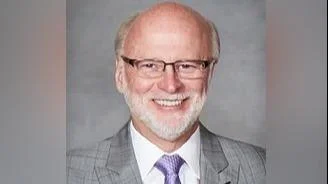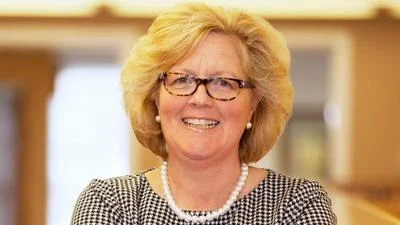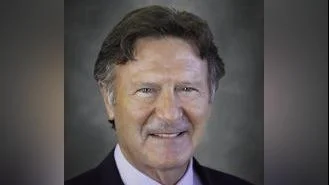City of Olney Board of Appeals met April 3.
Here are the minutes provided by the board:
AGENDA #1 “CALL TO ORDER” The April 3, 2023, meeting of the Board of Appeals was called to order at 7:00 p.m. in the Council Chambers of the Olney City Hall, 300 S. Whittle Avenue, Olney, Illinois, with Tony Zuber presiding.
AGENDA #2 “ROLL CALL” The following Board of Appeals members were present: Kurt Ginder, Scott Jones, Samantha Brazil, David Abell, Pat Everette, and Tony Zuber. Bridgett Jensen was absent. Also present were Code Enforcement Officer Dallas Colwell, and City Clerk Kelsie Sterchi.
AGENDA #3 “APPROVE MINUTES OF THE BOARD OF APPEALS MEETING ON FEBRUARY 9, 2023” Mr. Ginder moved to approve the minutes from February 9, 2023, seconded by Mr. Everette. Mr. Ginder, Mr. Jones, Mrs. Brazil, Mr. Abell, Mr. Everette, and Mr. Zuber voted yes. There were no opposing votes. The motion carried.
AGENDA #4 “SWEARING IN” Mr. Zuber asked that anyone wishing to testify on behalf of the items being discussed to stand and be sworn in. City Clerk Sterchi asked the individuals to stand, raise their right hands, and “swear to tell the truth, the whole truth and nothing but the truth so help me God.” Wesley Bell, Greg Eyer, Karen Winkels, Mark Lambird, and Darin Acord were sworn in.
AGENDA #5 “VARIANCE: 202 S. POLK STREET” Darin Acord had submitted a Request for Variation for 202 S. Polk Street, Olney, Illinois, Property Index Number 11-02-103-503. The petitioner was requesting a variance in the requirements in Title 17 (Zoning) of the City of Olney Municipal Code regarding portable buildings as accessory buildings. The granting of the variance would allow the petitioner to place a portable building without a residence on the property.
Mr. Zuber was aware that a letter of opposition had been received from Gregory Amerman. Mr. Zuber was also aware that the portable building had already been placed on the property without a variance or building permit.
Mr. Acord confirmed. He stated that he was not aware that the Code would prohibit that action and that his fast-talking salesman had the building delivered as soon as possible. Upon hearing that the building was an issue, Mr. Acord had contacted the salesman, but he and the company did not want to remove the building.
Mr. Abell asked Mr. Acord what he planned to do with the building. Mr. Acord indicated that he wished to use it for storage. He wanted to store nicer items in such a building versus a future garage that would be used for lawn care equipment. Mr. Acord added that the portable building was in good shape with a nice porch on the front of it. He also hoped to add a garden.
Mr. Zuber asked Mr. Acord if he was living in the building. Mr. Acord was aware that he had received a Special Use Permit to place a manufactured home on the property, but he said that his current job and lack of credit would be pushing that farther down the road. For now, he would continue to live with his mother down the block.
Mr. Zuber moved to deny the variance request for 202 S. Polk Street, seconded by Mr. Abell. Mr. Ginder, Mr. Jones, Mrs. Brazil, Mr. Abell, Mr. Everette, and Mr. Zuber voted yes. There were no opposing votes. The motion carried.
Mr. Zuber advised Mr. Acord that he could place the portable building on the property once he had a main building.
AGENDA #6 “SIGN VARIANCES: 733 W. MAIN STREET” Wesley Bell, Robinson Outdoor, LLC., had submitted Requests for Sign Variation for 733 W. Main Street, Olney, Illinois, with Property Index Number 11-03-124-007. The petitioner was requesting a sign variance to allow for a 200-square foot graphic area rather than the 72-square foot graphic area required in Title 15 (Buildings & Construction), and a variance in the two front yard setbacks to allow for 0-foot setbacks rather than the 15-foot front yard setbacks required in Title 17 (Zoning) of the City of Olney Municipal Code. The granting of the variances would allow the petitioner to place a digital, commercial sign.
One voicemail, six e-mails, and a research paper/letter were received in opposition of this request and the request under Agenda #7.
Mr. Abell recalled that Mr. Bell had petitioned the Board of Appeals in February for a separate sign variance request that had been denied due to its poor location. Mr. Bell confirmed. His impression was that the Board would be more open to locations on the highway versus downtown.
Mr. Bell again stated the benefits that such signs could bring to the City and pointed out highway studies that deemed such signage as safe for motorists.
Mr. Zuber asked if IDOT had approve such signage at this location. Mr. Bell replied that approval was first needed at the local level before he could apply through IDOT.
Mr. Zuber had concerns with granting the variances without IDOT approval. He pointed out that variances would stay with the property forever, no matter what the future use. Mr. Zuber also had concerns with approving a variance for a 0-foot setback at such a busy intersection.
Mr. Zuber moved to deny the variance requests for 733 W. Main Street, seconded by Mrs. Brazil. Mr. Ginder, Mrs. Brazil, and Mr. Zuber voted yes. Mr. Jones, Mr. Abell, and Mr. Everette voted no. The motion failed due to lack of majority.
AGENDA #7 “SIGN VARIANCE: 626 W. NORTH AVENUE” Wesley Bell, Robinson Outdoor, LLC., submitted a Request for Sign Variation at 626 W. North Avenue, Olney, Illinois, with Property Index Number 11-03-140-043. The petitioner was requesting a sign variance to allow for a 200-square foot graphic area rather than the 72-foot graphic area required in Title 15 (Buildings & Construction) of the City of Olney Municipal Code. The granting of the variance would allow the petitioner to place a digital, commercial sign.
Mr. Jones moved to approve the sign variance request for 626 W. North Avenue, seconded by Mr. Everette. Mr. Jones, Mr. Abell, Mr. Everette, and Mr. Zuber voted yes. Mr. Ginder and Mrs. Brazil voted no. The motion carried.
AGENDA #8 “PUBLIC COMMENTS/PRESENTATIONS” From the audience, Greg Eyer stated his concern with the highway study references that were cited by Mr. Bell. While Mr. Bell showed that the Department of Transportation conducted the study, Mr. Eyer’s research showed that it came from calsign.org which was an entity dedicated to supporting the needs of California’s signage and visual communications industry. Another study presented by Mr. Bell was created by Teresa Young, the President of Sign Biz. Sign Biz was a sign business networking site.
Mr. Eyer then told the Board that one study was legitimately done by the Department of Transportation, and the Department did find no trouble with signs in Reading, Pennsylvania, and Richmond, Virginia. He felt that those two locations were much different than Olney.
Mr. Eyer also understood that Mr. Bell had offered the City “free sign time.” He was curious about how much time the City would actually be receiving. Mr. Bell replied that would be based on availability. Mr. Eyer then asked if the City would have any such option if Mr. Bell’s ad options were sold out. Mr. Bell confirmed that if all 14 slots were sold, then the City would not have availability.
Mr. Eyer also understood that Robinson Outdoor advertised the availability of weather warnings on their signs. Mr. Eyer did not believe that was much of a benefit since most people had cell phone that would automatically issue such warnings. Mr. Bell pointed out that people should not be on their phones while driving.
Mr. Zuber then said that he understood citizens’ concerns with how such signage would affect beautification. He pointed out that the approved W. North Avenue location would be sufficient. Signage already existed in that area, including the brightly lit Burger King sign and building.
Mr. Eyer still believed that even the W. North Avenue location was not appropriate as it was zoned C-2 and not M-1. Mr. Zuber countered that 300-square foot signs were allowed in such zones if a business also accompanied the sign. Mr. Zuber also felt that the lumens of the proposed sign would not be as bothersome as signs such as the one at Domino’s.
Mr. Eyer asked what would compare to the lumens of the proposed sign. Mr. Bell was not sure. Mr. Eyer indicated that an iPhone’s lowest setting was at 200 lumens. He believed that Mr. Bell’s proposed sign would range from 75 to 200 lumens. Mr. Bell believed that comparing billboards and cell phones was like comparing apples to oranges.
Mr. Eyer was curious if the variance requests for 733 W. Main Street would come back to the Board for a majority vote. Mr. Zuber believed that would be possible if IDOT was not opposed to the request.
From the audience, Chelsea Rude approached the Board. Mrs. Rude had supplied the research paper/letter with attached documentation. She cited a study in Pennsylvania that determined negative economic impacts from large, illuminated signs. Property values declined by at least $30,000 per home. Decreases in wages and occupied homes, as well as increased poverty rates were also reported.
Mrs. Rude agreed with Mr. Eyer that Mr. Bell’s highway studies were deceiving. She was also able to find several more studies that found that such signage did, in fact, risk safety. Such signage increased accidents and side swipes, especially in young and elderly drivers.
Mrs. Rude then told the Board that more and more cities were establishing restrictions on billboards. The states of Maine and Vermont also had full bans on billboards. These states had much safer driving. The most dangerous state for driving was Florida, and Florida had the most billboards in the country.
Additionally, such billboards could be a liability to taxpayers. Mrs. Rude stated that if the City wanted a billboard removed, then they would need to pay the billboard company on future loss of revenues.
Mr. Zuber appreciated Mrs. Rude’s research. While he agreed with some of her points, he did not agree with billboards decreasing property values and increasing poverty. Mrs. Rude clarified that the studies compared such factors before and after billboards were placed, so the facts were hard to refute.
AGENDA #9 “ADJOURN” Mr. Jones moved to adjourn, seconded by Mr. Everette. Mr. Ginder, Mr. Jones, Mrs. Brazil, Mr. Zuber, Mr. Abell, and Mr. Everette voted yes. There were no opposing votes. The motion carried.
The meeting of the Board of Appeals adjourned at 7:26 p.m.
https://cms2.revize.com/revize/olneynew/ba%20apr%203%202023%20min.pdf




 Alerts Sign-up
Alerts Sign-up